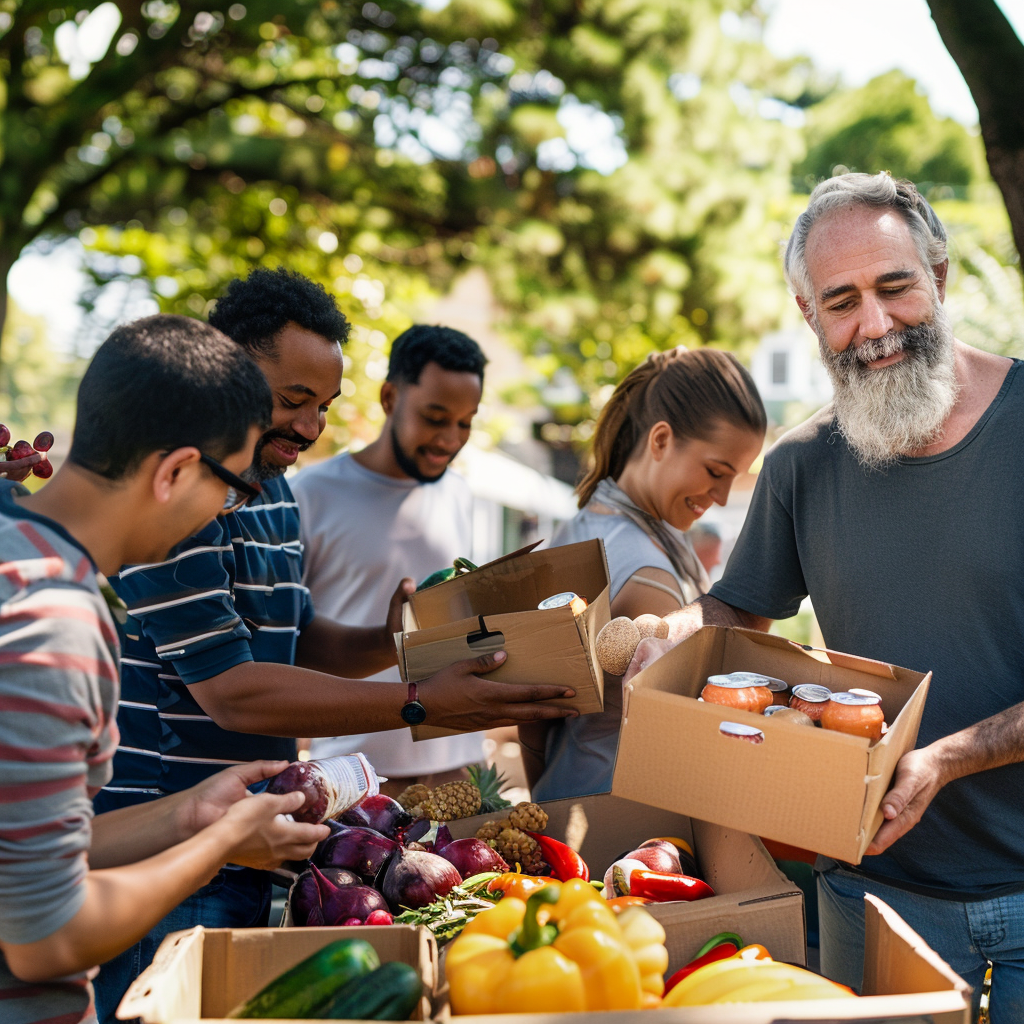Brendon Pack on How Americans Can Help Fight the Ongoing Food Crisis
Food insecurity is a harsh reality for millions of Americans. In 2022, an estimated 49 million Americans relied on food assistance from charities like Feeding America.
That’s roughly one in seven people in the US who rely on a food bank’s charitable programs just to feed themselves each year.
Food shelters, often run by nonprofits and religious organizations, play a critical role in this network of support.
Food banks have played a crucial role throughout American history and continue to be a vital cog in both the social and economic fabric of America. Here’s a breakdown of their importance:
Socially
- Alleviating Hunger and Food Insecurity: Food banks provide a vital safety net for millions of Americans struggling with food insecurity, meaning they lack consistent access to enough nutritious food. This can be due to low income, job loss, unexpected bills, or other factors. By offering free or low-cost food, food banks help families put meals on the table and prevent hunger.
- Promoting Community Health: Food banks often distribute fresh produce, dairy, and whole grains in addition to canned goods. This helps ensure people have access to nutritious food, which is essential for good health and preventing chronic diseases.
- Social Support and Stability: Food banks can be a source of social connection for those experiencing food insecurity. They may offer services like job training or connect clients with other social programs, promoting stability and a pathway out of poverty.
Economically
- Reducing Food Waste: Food banks rescue perfectly edible food from grocery stores, manufacturers, and farms that would otherwise be thrown away. This reduces food waste and its environmental impact.
- Stimulating the Economy: Food banks rely on volunteers and sometimes hire staff, creating jobs and contributing to the local economy. Additionally, by keeping people healthy, they reduce the strain on healthcare systems, saving money.
- Supporting Local Businesses: Food banks often partner with local farmers and distributors to purchase food, providing a market for their products.
Limitations to Consider
- Band-Aid Solution: While crucial, food banks are a response to a larger issue: food insecurity itself. Ideally, long-term solutions to poverty and unequal access to nutritious food are needed.
- Dietary Needs: Fulfilling specific dietary needs can be challenging for food banks.
However, despite limitations, food banks remain a cornerstone of social safety nets and play a vital role in both the social and economic well-being of America.
But how exactly do these shelters help people in need?
Distributing Essential Nourishment
- Emergency Food Assistance: Food shelters provide free or low-cost meals to individuals and families facing hunger. This immediate intervention prevents people from going hungry and ensures they have the energy to navigate their difficult situations.
- Focus on Nutrition: Many shelters go beyond simply offering sustenance. They strive to distribute balanced meals with a focus on fresh produce, whole grains, and lean proteins whenever possible. This helps combat diet-related health problems often associated with food insecurity.
Beyond the Meal: Offering Support Services
Food shelters often serve as a one-stop shop for people experiencing hardship. Here are some additional ways they assist those in need:
- Community Resources: Shelter staff can connect individuals with government assistance programs like SNAP (Supplemental Nutrition Assistance Program) or local food banks to provide ongoing support.
- Social Services: Shelters may offer referrals for job training, housing assistance, or mental health counseling, addressing the root causes of food insecurity and empowering people towards self-sufficiency.
- Sense of Community: Food shelters can foster a sense of belonging and community for those who might be feeling isolated or alone during challenging times.
How You Can Help
The fight against hunger requires a collective effort. I live in the Seattle area and devote my energy to helping local food banks like the West Seattle Food bank and the Fare Start organization.
Here are a few ways you can contribute to the work of food shelters:
- Volunteer your time: Shelters rely heavily on volunteers to help with food preparation, distribution, and administrative tasks.
- Donate non-perishable food items: Canned goods, dry pasta, and shelf-stable proteins are always in high demand.
- Organize a food drive: Rally your community to collect food donations for local shelters.
- Financial contributions: Monetary donations allow shelters to purchase fresh produce, dairy products, and other essential food items.
Food shelters are a vital lifeline for millions of Americans struggling with hunger. By providing nutritious meals, essential services, and a sense of community, they offer a critical step towards a brighter future.
Let’s all do our part to ensure our neighbors have access to the food they need to thrive.
About Brendon Pack
Brendon Pack is the current Chief Executive Officer (CEO) of 1-800Accountant, a virtual accounting firm specializing in serving small businesses.
His background lies in sales and marketing, with a proven track record of revenue growth. Pack’s journey at 1-800Accountant began as part of the founding management team in 2013.
He rose through the ranks to become Chief Revenue Officer in 2017, overseeing sales and client acquisition strategies. In 2022, he assumed the CEO role, leveraging his experience to lead the company’s overall growth.
Brendon Pack holds a Bachelor of Science degree in Finance from the University of Washington’s Michael G. Foster School of Business. His expertise positions him to drive 1-800Accountant’s mission of empowering small businesses through financial guidance and technological solutions.
